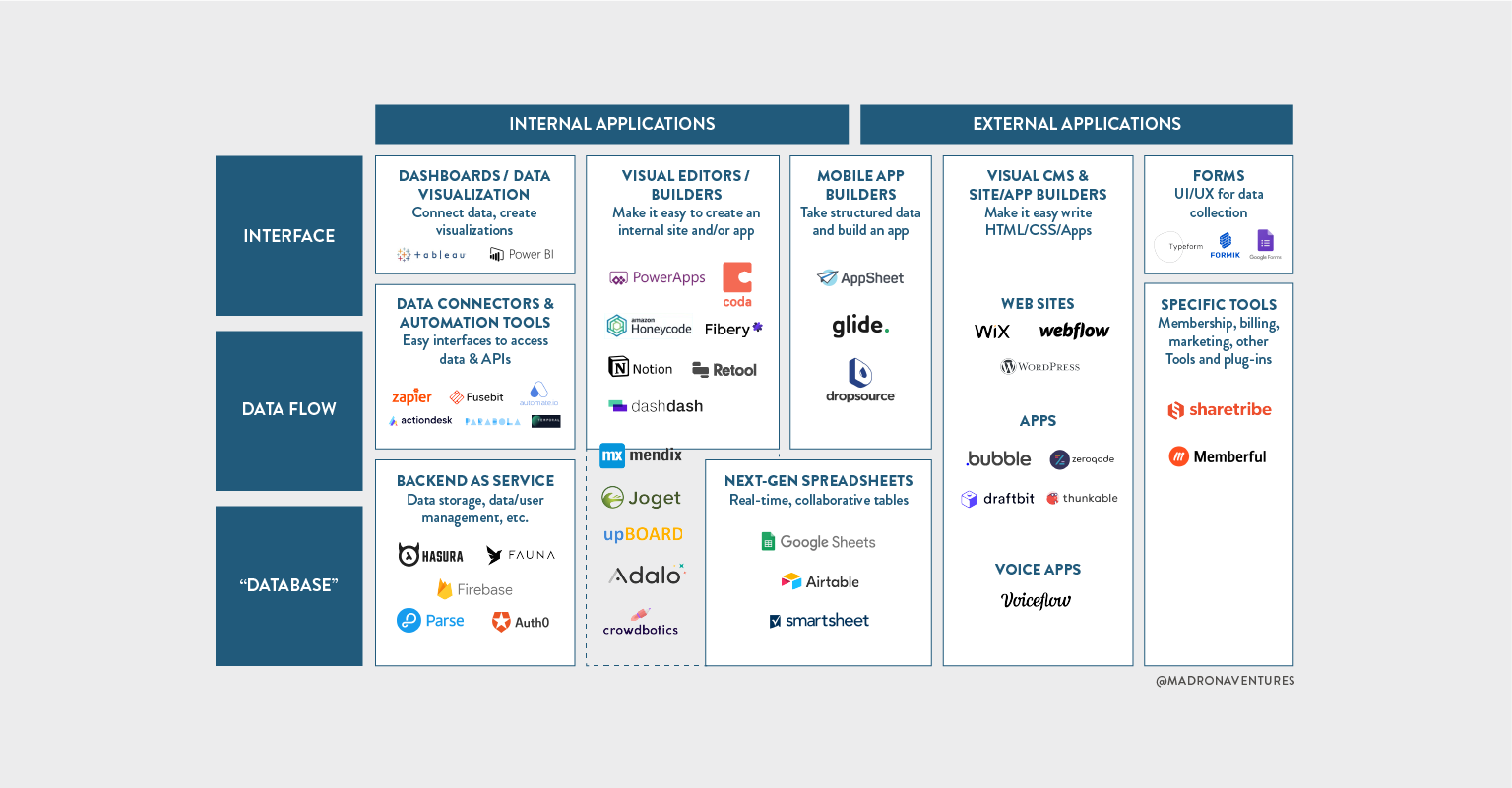Discover How Scalable Data Sources Can Be Made Use Of Without Coding to Boost Your Company Procedures
In today's hectic service environment, the capacity to handle and assess information effectively is critical. no-code. Scalable data sources, especially when paired with no-code remedies, provide a transformative technique that empowers non-technical individuals to simplify procedures.
Understanding Scalable Data Sources
Scalable data sources are necessary for modern-day service procedures, allowing organizations to efficiently take care of boosting volumes of information without compromising performance. These databases are developed to grow and adjust to the changing needs of a business, making certain that they can manage larger datasets and even more complicated questions as business demands advance.
Understanding scalable databases includes identifying their 2 key types: upright scaling and horizontal scaling. Upright scaling, or "scaling up," involves adding even more power (CPU, RAM) to an existing server to enhance efficiency. Conversely, horizontal scaling, or "scaling out," requires adding a lot more servers to disperse the lots, which frequently leads to greater versatility and fault tolerance.
One more important element is the style of scalable databases, which can be either non-relational or relational. Relational databases, such as MySQL and PostgreSQL, are structured and make use of SQL for inquiries, while non-relational data sources, like MongoDB and Cassandra, provide more adaptability with unstructured information.
Eventually, comprehending scalable data sources is vital for businesses aiming to take advantage of data as a calculated property, allowing them to stay competitive in an increasingly data-driven setting.

Benefits of No-Code Solutions
Unlocking the possibility of no-code options equips companies to enhance operations and improve efficiency without the need for comprehensive shows expertise. These platforms enable non-technical customers to produce, modify, and handle data sources effortlessly, therefore democratizing accessibility to modern technology across groups.
Among the primary benefits of no-code options is their speed of application. Services can rapidly deploy applications and automate procedures, dramatically reducing the moment spent on development cycles. This dexterity allows organizations to react quickly to market changes and client demands, promoting an one-upmanship.
In addition, no-code systems decrease reliance on IT divisions for everyday tasks, permitting technological groups to concentrate on more complicated jobs that require specialized abilities. This shift not only maximizes resource allowance however also advertises development within the company.
Cost-effectiveness is another advantage, as no-code solutions can lower growth and upkeep expenditures. By minimizing the demand for coding proficiency, firms can harness the capacities of their existing workforce without the expenses of hiring added employees.
Popular No-Code Data Source Equipment
The increase of no-code options has actually led to the introduction of various data source tools that accommodate services seeking performance and availability. These devices equip customers with restricted technological expertise to develop, manage, and adjust databases seamlessly.

Caspio attracts attention for its capability to construct internet applications without any kind of coding. It enables companies to develop robust databases and release applications rapidly, satisfying various industry needs. In a similar way, Flair offers powerful information and easy to use user interfaces monitoring capacities, making it possible for organizations to develop custom-made applications customized to their operations.

Use Cases in Organization Operations
How can organizations take advantage of data source devices to improve their procedures? Scalable databases provide organizations with effective capacities to handle and examine information without the need for considerable coding understanding. These tools can enhance various business procedures, eventually causing enhanced performance and performance.
One prominent usage instance is customer connection management (CRM) Businesses can utilize scalable databases to track client communications, choices, and comments, enabling customized communication and far better service. By centralizing this information, groups can team up better and react to consumer requirements in real-time.
One more significant application is inventory monitoring. Business can utilize no-code data source tools to keep an eye on stock levels, track deliveries, and forecast demand. This makes sure ideal stock degrees, reduces waste, and decreases stockouts.
Additionally, task monitoring can gain from scalable data sources by permitting teams to manage tasks, deadlines, and resources in an unified system. With real-time updates and data visualization, job managers can make informed choices.
Getting Started With Execution
Carrying out scalable data sources in business operations requires an organized technique to make sure effective integration and utilization. The primary step is to conduct a thorough demands analysis, determining specific service needs, information kinds, and anticipated growth patterns. This foundational understanding will direct the option of the proper data source remedy.
Following, pick an user-friendly, no-code database system that straightens with your functional objectives. no-code. Lots of contemporary options offer instinctive user interfaces, allowing non-technical customers to handle data successfully. After choosing my company a system, develop a clear data style that describes how information will certainly be you could try these out arranged, accessed, and maintained
Training is important; ensure that group participants are furnished with the essential abilities to utilize the data source. Consider offering workshops or tutorials to acquaint personnel with the system's capabilities.
Final Thought
In conclusion, the combination of scalable databases via no-code options offers significant benefits for company procedures. Inevitably, leveraging these modern technologies can lead to boosted efficiency and functional efficiency, positioning services for continual growth in a competitive landscape.
One prominent no-code data source device is Airtable, which combines the performance of a spread sheet with the power of a data source.Just how can companies utilize database devices to enhance their procedures? Organizations can utilize scalable data sources to track customer communications, choices, and feedback, making it possible for personalized interaction and better solution.Applying scalable data sources in company operations needs an organized strategy to guarantee effective integration and use.In verdict, the integration of scalable data sources through no-code services provides significant benefits for organization procedures.